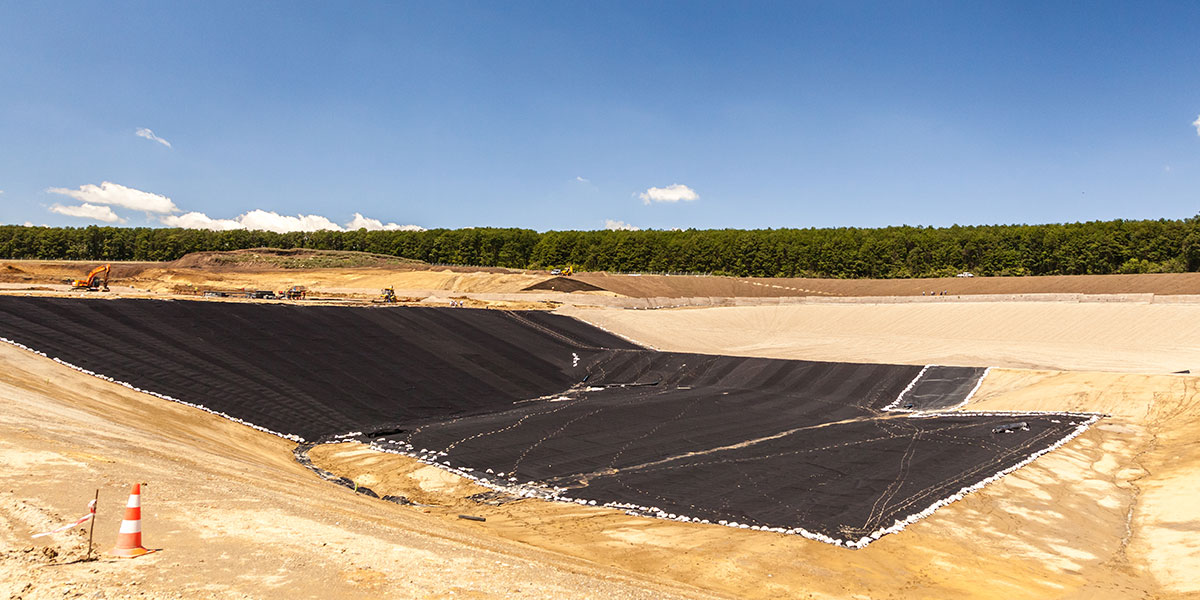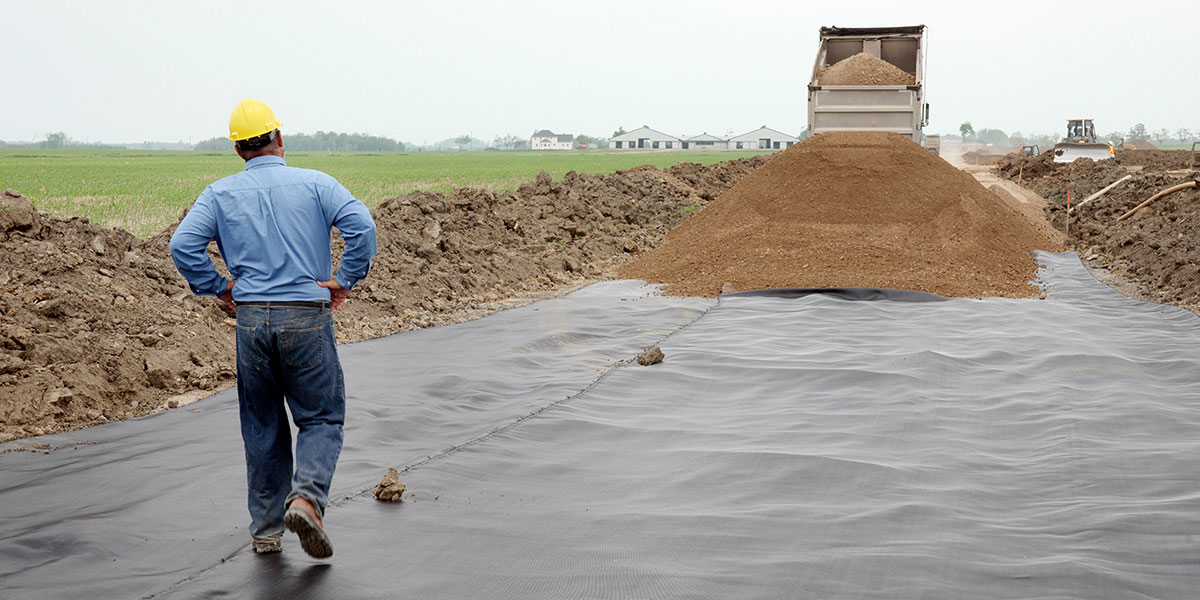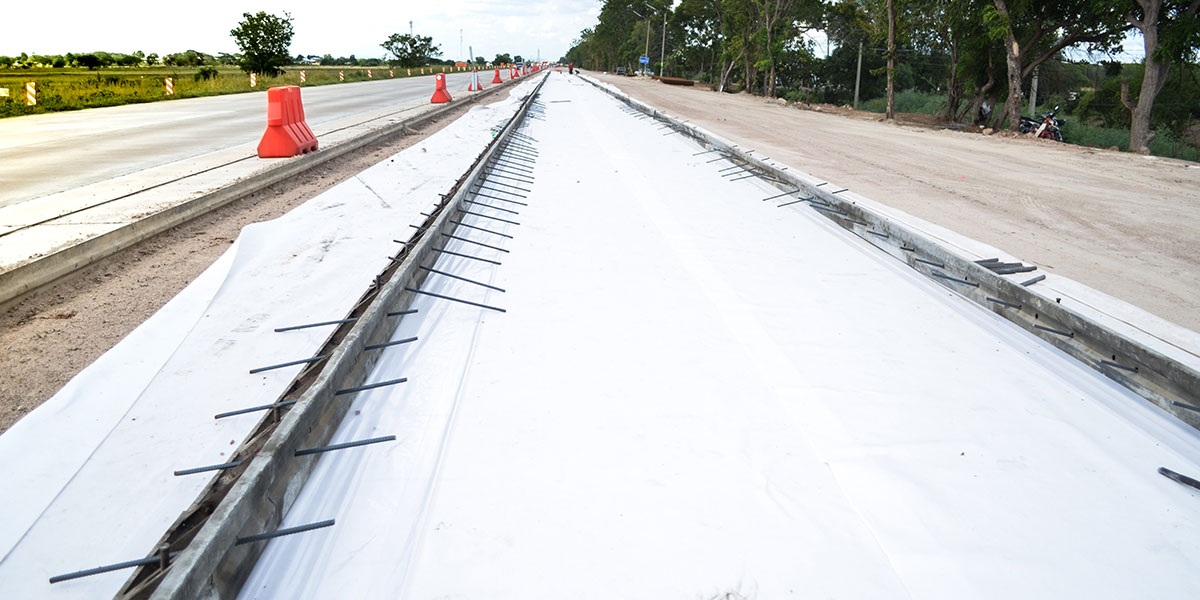Geosynthetic systems such as geogrid, as well as geotextile canvas, which are mainly used for the reinforcement of the canvas, as it is made of very strong polymers, with excellent operational qualities. These materials can perform separation and reinforcement functions that perceive a point load and are distributed along the widest area of its surface. Such an ability reduces the build-up of chosels, cracks, holes and rhetoric on the surface of the street cannon. In that context, the types of geosynthetics are multi-layer "cake" in which the service life of the motorway depends on the stability and strength of each layer. Using geosynthetic fabrics to act as a layer between mass layers makes it possible to strengthen the foundation of the road and create a reliable road structure. Also between geosynthetic clay liner and rubble, the geosynthetic membrane prevents the crushed stone from melting into a soft soil, which reduces the consumption of the material and increases the overall stability of the base, while the rubble fractions are fixed in the geosetic cells and form a composite layered, well-resistant composite layer .
Geosynthetic Types in Industry

Non-woven geosynthetic types, with which it is possible to even strengthen the bank of the reservoir, usually stacked between sand and debris. This material does not penetrate into the sand particles between the larger debris fractions. Also it prevents this mixing of bulk materials, which significantly reduces their flow rate and increases the overall stability of bulk layers while performing separation and reinforcement functions. Microscopic holes in the geotextile are used as drainage and filter properties. Because of them, it is not clogged with the smallest particles of soil, free flowing air and moisture. Advantages of geosynthetic reinforcement:
- Increasing the delimitation of road and airfield coatings
- Reduce gauge formation, chipping, ridge, displacements and other road bed deformations by increasing the strength of the asphalt concrete coating on the gap and ensuring a more even distribution of stress over a larger area.
- Prevent repeated manifestation of reflected and fatigue cracks from the old in new layers of the asphalt concrete coating
- Reducing the thickness of the asphalt coating layer and increases the elastic properties of asphalt concrete, which increases the resistance to the expansion efforts with long and repeatedly attached loads.
Functions and Applications of Geosynthetics in Roadways
- Reinforcement of embankments on weak and bundled grounds in the construction of temporary roads, winters, parking lots and other structures.
- Reinforcement of vehicle embankments and railways, parking equipment, root tracks and landing strips of Aerodrom coatings
- Construction of structures on stacked terrain (creation of flexible wave wood work).
- Construction of platforms for high loads (container terminals, airfields, TWW polygons).
- Reinforcement and separation of heterogeneous and fine-grained soils, protection of soils from water erosion.
- Strengthening the coasts of reservoirs, cones of bridges and overpasses.
- Protection of slopes from landslide processes, wind and rain erosion.
- Geosynthetic reinforcement of the breeding dumps in mining, combined, followed by the attachment of the aesthetic herbal type.
- Strengthening the slopes of the embankment of the earthen canvas of the pit.
- Landscape design (Armogarant structures, artificial reservoirs, etc.)
- Strengthening the slopes of embankments during the construction of automobile and railways.
Due to the elasticity and low weight of the material which we as Geobera company manufacture in geosynthetic institute it takes bumps in the slope without requiring additional anchoring. Our products have a strong resistance to chemical and biological effects pH 2.0-9.5 as a difference from other products which are provided by different geosynthetic manufacturers in geosynthetics industry. Moreover our products with geosynthetic clay liner systems offer the possibility of operation at different temperatures (from -60 to +60 degrees), resistance to ultraviolet radiation. Also we as a well-known company have the ability to manufacture material in a special receipt according to customer requirements. With this high-quality service, we have been exporting many diverse products to the Philippines, Russia, Albania, France, Greece, Bulgaria, Kosovo, Malta and many more.
Geogrid Contributions to The Reinforcement

- Prevention of deformation and bottom sides.
- Reinforcement of hills on weak grounds in the construction of permanent and temporary roads, parking lots and other structures
- Reducing the thickness of the layers of inert road construction materials.
Road geotextiles. In fact, apply to create a positive pressure or bridge when peat, clay, or bog-laden soil is added at the base of the cloth. This is done to distinguish between the layers of different fractions (debris, sand, soil) and to prevent mixing, which brings about the deformation of the road coating.
Geogrid has higher strength nowadays comparing to history of geosynthetics. In this way, you can apply it more than once and benefit from function and application of geosynthetics but also after the operation and further dismantling of a temporary road. Geogrid varies in density according to way of production in different geogrid manufacturers. For the construction of the streets, materials from 250 g / sq.m for the streets of the average load and parking possibilities of vehicles up to 600 g / m² for particularly loaded streets, runways, etc.



